
Covering over 100 miles north to south, the second-largest estuary in the United States makes up a large stretch of Northeast Washington. And this body of water is as bountiful as it is big. Anglers can spend thousands of hours in Puget Sound fishing for amazing table fare and top-quality sport fish. Salmon, Halibut, and Squid are all abundant here – and that’s just the start. Read on to discover the ins and outs of this legendary waterway.
Puget Sound Fish Species
The turbulent waters of Puget Sound hold an angler’s dream combination: impressive table fare and challenging – but abundant – sportfishing. Bottom fish and pelagics alike visit this well-managed fishery every year, accompanied by delicacies like King Crab, Squid, and Shrimp. Here are some of our favorite targets.
Salmon
Most anglers know about this region for one main reason: the world-class Salmon fishing in Puget Sound. The Pacific Northwest is famous world-over for its Salmon, and Seattle’s Space Needle overlooks one of the species’s busiest migration routes. All five species of Pacific Salmon are available here to some extent. Here’s what you’re most likely to catch, and when.
Chinook Salmon
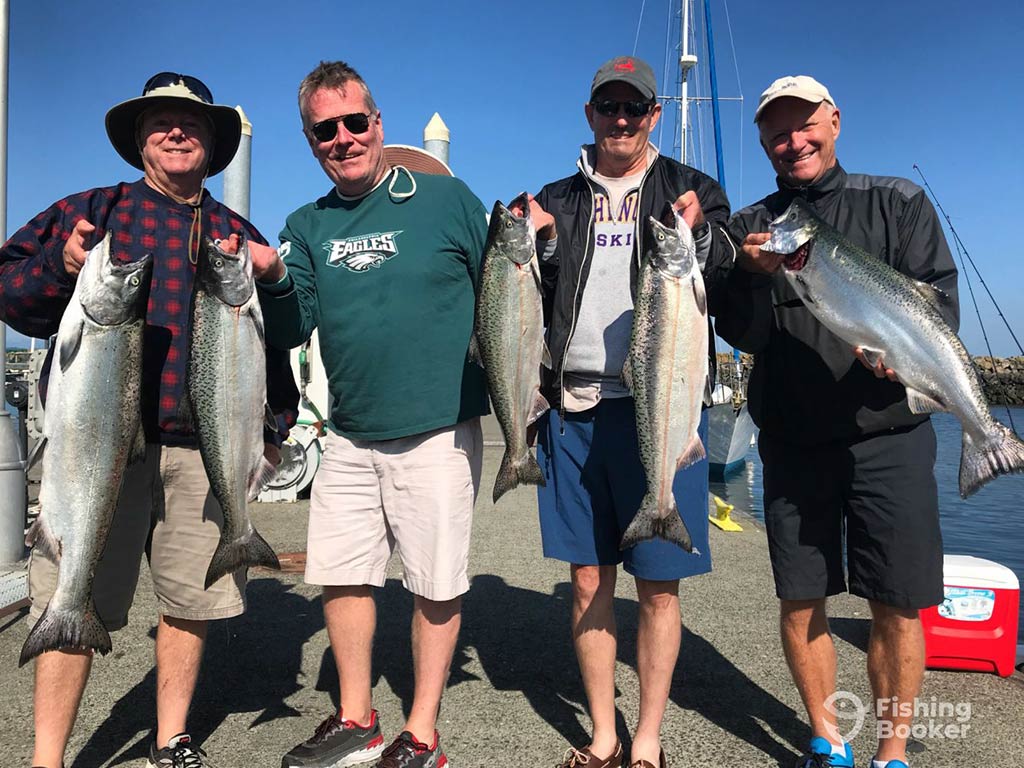
Also known as “King” Salmon, the mighty Chinook is the biggest of all the Pacific Salmon species. They usually arrive in the north of the Sound in June and by July and August they’re everywhere. Occasionally reaching sizes of over 40 pounds, it’s more common to catch fish weighing about half that – which is still worth writing home about. By late summer, the migrating Kings have all but disappeared up their native rivers to spawn.
Puget Sound plays host to its own year-round Chinook fishery, too. Smaller “Blackmouth” Salmon are Chinooks who haven’t yet matured enough to leave the Sound for the open ocean. These are something of a Puget Sound specialty and are particularly hot targets in the winter.
Coho Salmon
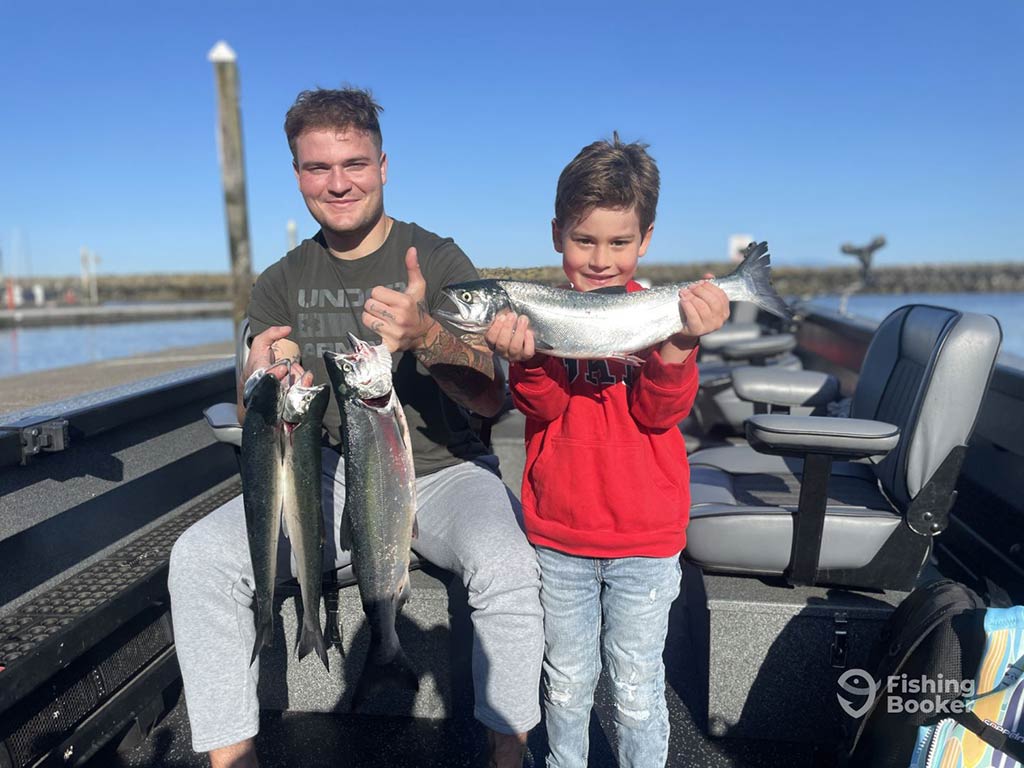
Like their larger cousins, “Silver” Coho Salmon usually arrive in the Sound in June. These agile fish are abundant, delicious, and tend to stick around until later in the year. By mid-September, you’re in with the chance of catching a solid 8–15 lb Coho. Also, like King Salmon, you can fish for “Resident Silvers” throughout the year.
Pink Salmon
The strange thing about Pink Salmon is that they only migrate into the Sound every other year – in odd-numbered years. As long as a year ends in a one, three, five, seven, or nine, you can be sure that everyone in Puget Sound will be talking about “Humpies.”
Starting about mid-July, the fishing for Pinks tends to heat up in August. Then, it can be hard to catch anything but these fish! Although Pink Salmon aren’t so well-regarded in the kitchen, they taste great smoked or on the BBQ.
Chum and Sockeye Salmon
Chum and Sockeye Salmon also make their way into the Sound every year. Large and aggressive, Chum are usually considered more fun to catch than they are to eat. But, thanks to their oily skin, they’re perfect for the smoker. Sockeye Salmon, on the other hand, taste fantastic and are very easy to catch. But while Chum Salmon are abundant in the south of the Sound, Sockeye are only really found in the north – and even there they’re relatively rare.
Halibut
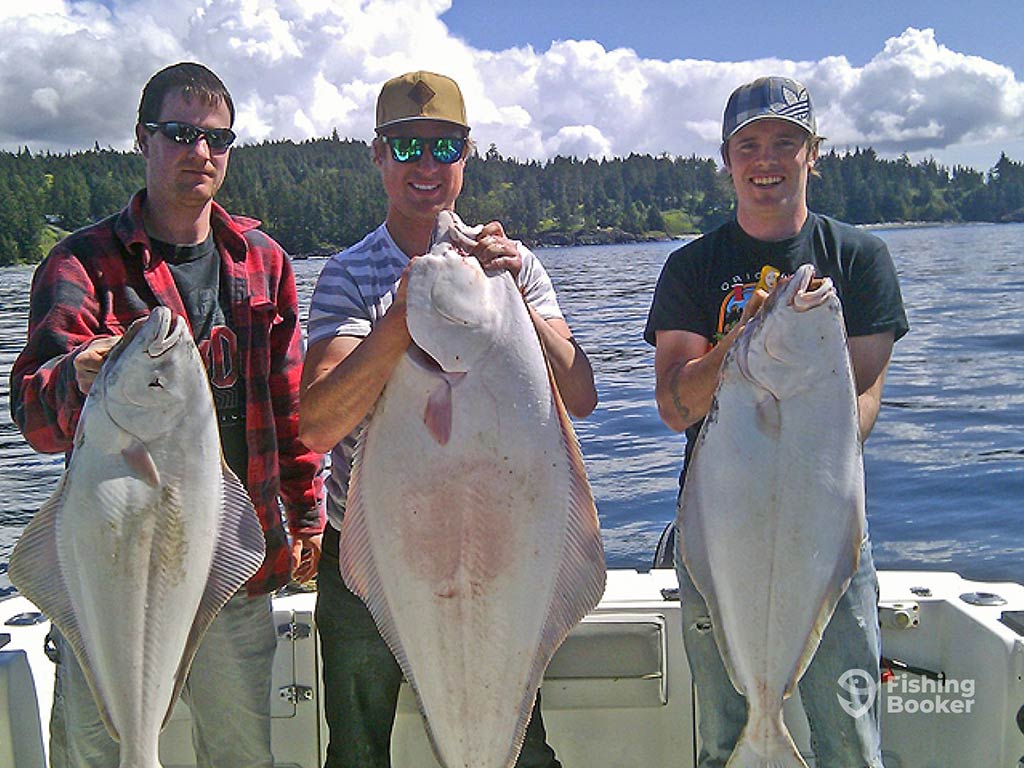
On the topic of good-eating fish, there’s not much on the menu that’s better than Halibut. These ocean-dwelling Flatfish can reach enormous proportions and will easily feed an extended family and then some. Halibut fishing in Puget Sound is heavily regulated, but you may reel in a giant if you get a sought-after place on a charter boat in season. These monsters mainly live in the north, with Mutiny Bay and Admiralty Bay among the most famous hotspots.
Lingcod
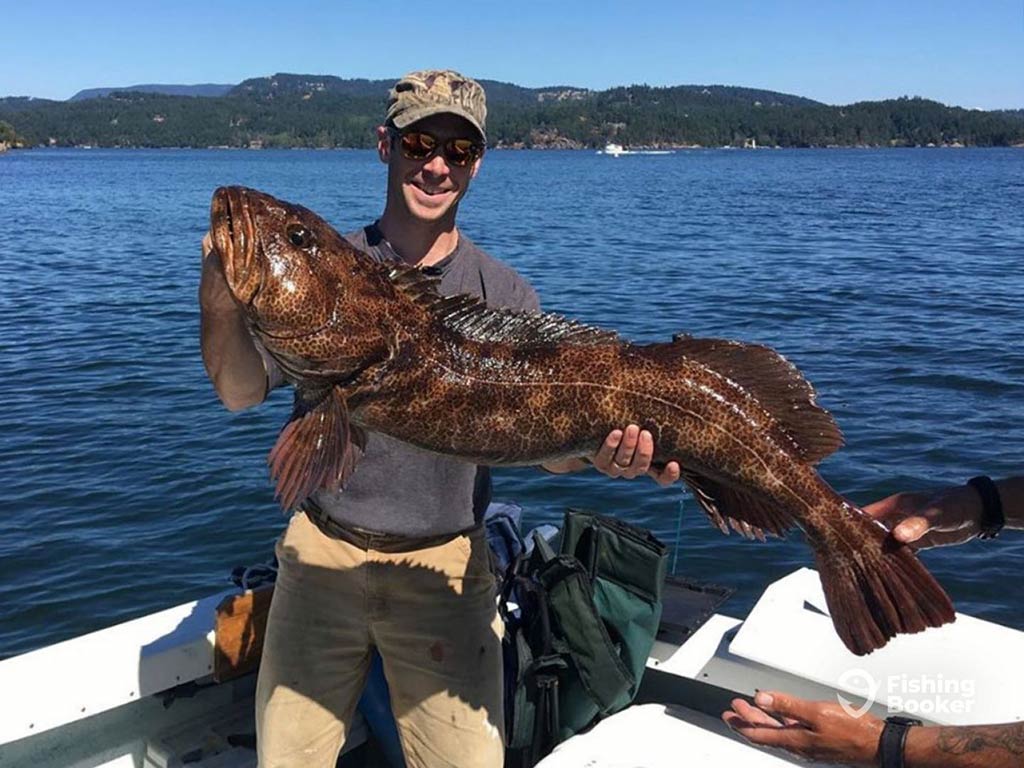
At the risk of sounding like a broken record… have you ever tried Lingcod? Sportfishers love to target these bottom fish because they hit the bait unusually aggressively and don’t give in easily. And the rewards are sweet, serving up as they do in the form of some of the best-tasting white fish you can find on the planet. Puget Sound Lingcod fishing can take place over any type of rocky structure, whether ledges or artificial reefs.
Squid
Squid may not exactly be a fish but Puget Sound Squid fishing deserves a mention in our guide. That’s because tens of thousands of these delicious cephalopods make their way to these waters every year. Rocking up to Seattle’s piers and basking in the city’s bright lights, they’re most abundant in December and January. You can target Squid very effectively on a boat, but pier fishing for them is something of a tradition in these parts.
What Else?
From Cabezon to Sturgeon, the list of fish in Puget Sound goes on and on. But come fishing at any time of the year and you’ll have access to delicious bottom fish, such as Flounder, Sand Dab, and Sole, depending on the season. Higher in the water column, Herring, Pile Perch, and Mackerel are also fun to catch and great to eat.
How to Fish Puget Sound
The deep, turbid waters of the Sound can look daunting when you first set out with a fishing rod. But you can access this incredible fishery surprisingly easily. We’ll walk you through some of the most popular options.
Puget Sound Charter Fishing
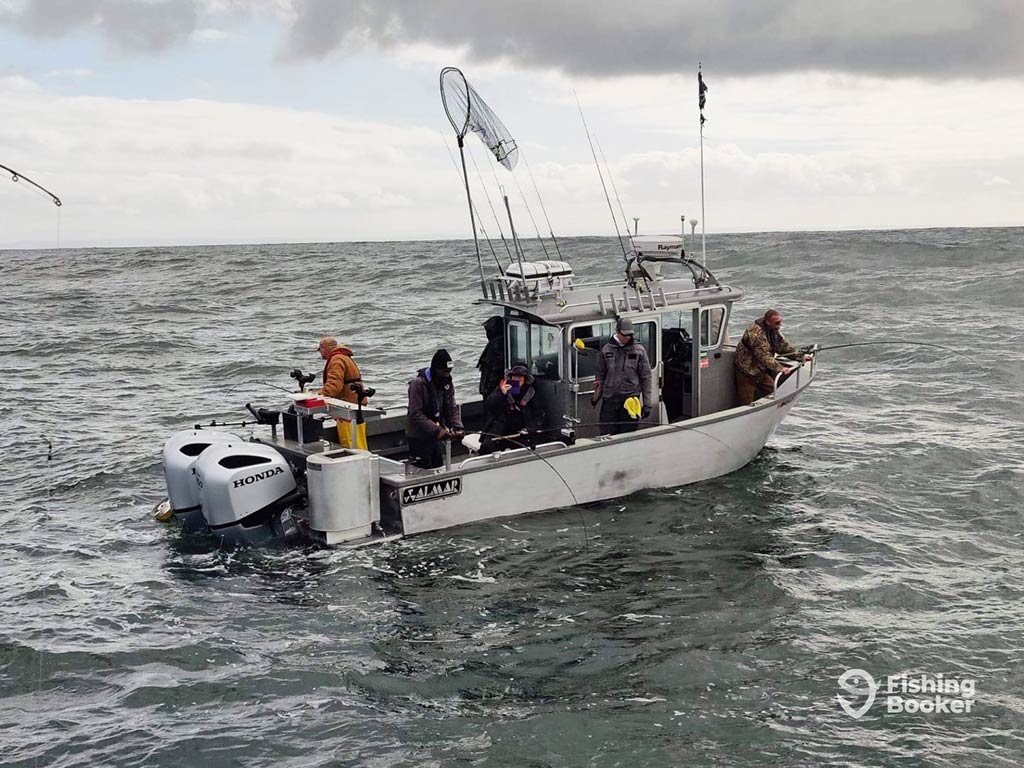
In terms of simplicity, access to the fishery, and odds of catching, you can’t do better than hiring a boat and a professional captain. Puget Sound fishing charters target all the Sound’s most popular species and offer a true sportfishing experience.
Most charters focus first and foremost on Salmon. The most popular way of targeting this species is by trolling deep water, using downriggers, sinkers, or divers to lower the bait to the area where the Salmon school. Some charters also offer the traditional local technique of mooching, which is a type of drift fishing where you hold onto the rod the whole time. This is more difficult than trolling as it’s much more involved – which makes it a lot of fun.
Of course, it’s not all about Salmon. Bottom fishing is another popular option. Meanwhile, captains in the north of the Sound may also offer Halibut trips, and many in the Seattle area put on special squidding trips, too.
Puget Sound Fly Fishing
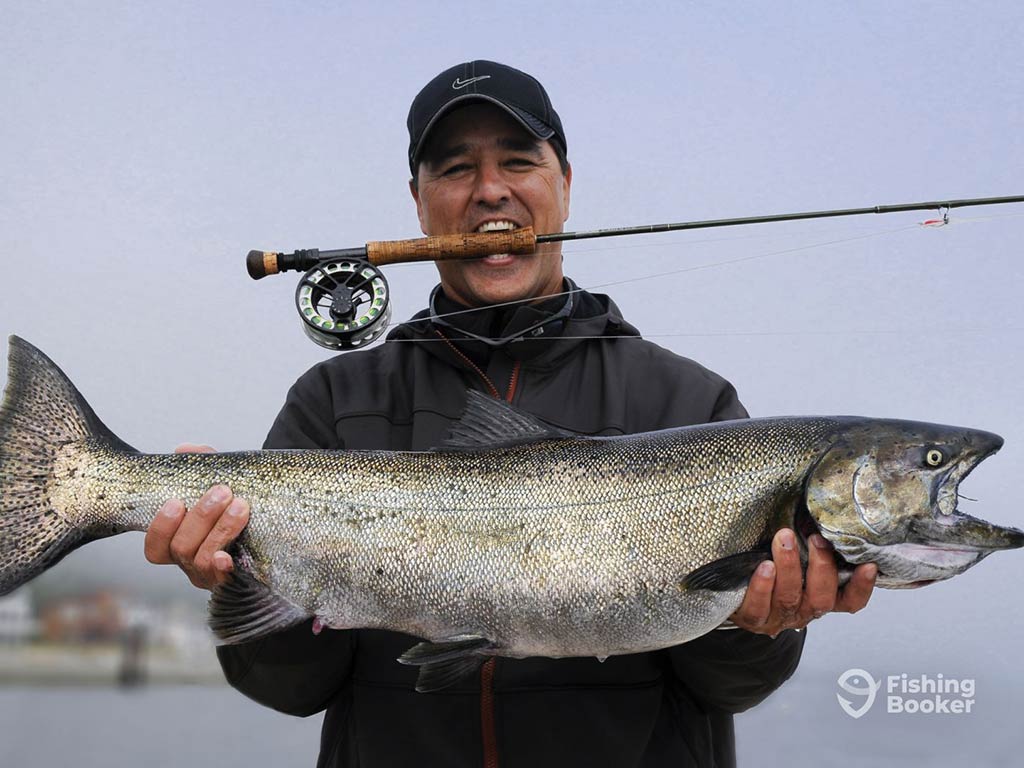
If you’re more into perfecting your cast in breathtaking surroundings, you have ample opportunity here. Puget Sound fly fishing is growing in popularity, particularly among people who want to battle Salmonids as they return to their spawning grounds.
Ask any local fly fisher what they like best about the area, and they’ll probably mention Sea-run Cutthroat Trout. You can catch them all year round, with peak fishing taking place in the south of the Sound in winter and spring and in the north in summer and fall.
Coho Salmon is another favorite. Their biennial run is exciting however you like to fish, but catching one on the fly off a beach is unforgettable.
Puget Sound Shore Fishing

Whether you’re fishing with flies or conventional gear, your options for shore fishing in Puget Sound are almost endless. Pretty much any beach in the Sound could hold Salmon or Sea-run Cutthroat depending on the time of year. Deception Pass is one of our favorite spots in terms of sheer numbers of Salmon in a small space. Or, you can fish the north Whidbey Island beaches for stunning Cutthroat and Bull Trout.
Come prepared with a medium-weight rod and 15 lb test line and you’ll be ready to tackle whatever the beaches throw at you. Casting jigs or float fishing with herring is effective for Salmon and more.
Puget Sound Pier Fishing

Fishing piers give shore-bound anglers access to deeper waters than they’d find alongside the coast. And Puget Sound has scores of them. A fun way to try your luck against a passing Salmon, your only concern will be finding space next to all the other anglers with the same idea!
We’d need a dedicated article to cover all of Puget Sound’s fishing piers, but we recommend checking out Edmonds Fishing Pier in the north for year-round Salmon. If you’re near Tacoma, Les Davis Pier is fantastic for its wide variety of fish and local hustle and bustle.
Puget Sound Fishing Spots
If there’s one thing we can say about place names in Washington, it’s that they don’t give much away. Don’t be fooled! Foulweather Bluff, Point No Point, and Useless Bay offer some of the best fishing in the Pacific Northwest. While there are thousands of good places to go fishing in Puget Sound, the following hotspots are some of the most renowned.
Possession Point – North Puget Sound’s Favorite Fishing Grounds
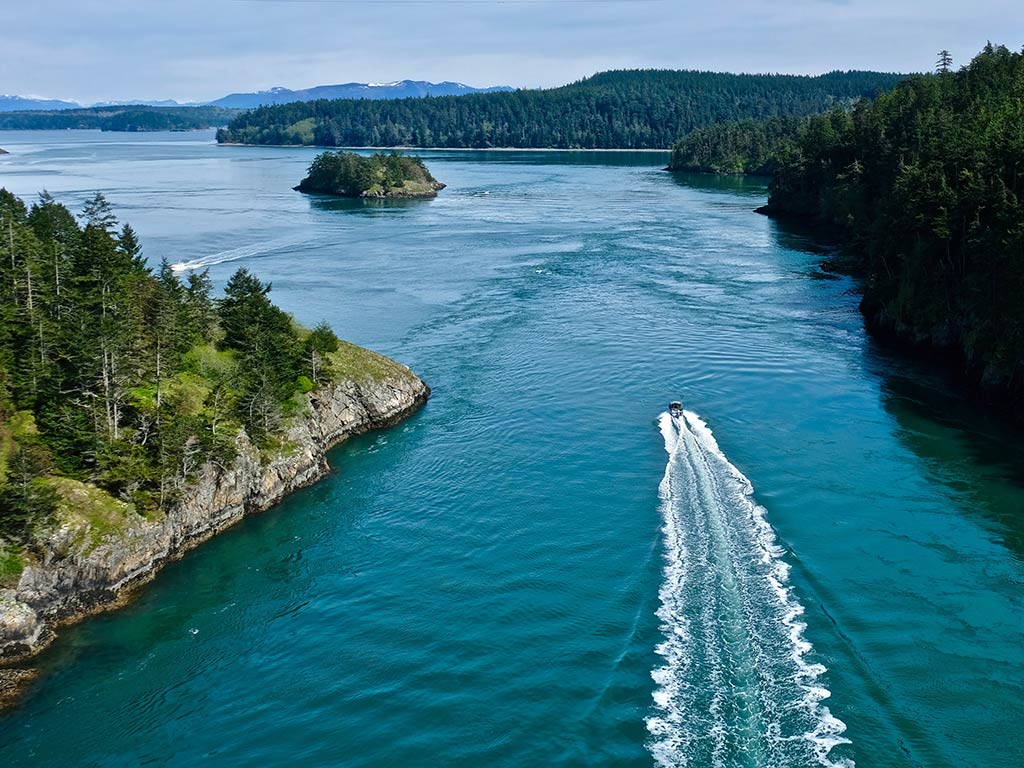
The southern tip of Whidbey Island holds fantastic fishing all year round. This is thanks to its access to Possession Bar, a collection of reefs that basically form an underwater extension of the island between Possession Point and Scatchet Head. At the intersection of Admiralty Inlet, Possession Sound, and Central Puget Sound, it’s a meeting point of migration routes. This means you’re in for a rough boat ride! But the sheer number of Salmon make up for it.
Elliott Bay – Fishing the Heart of Seattle
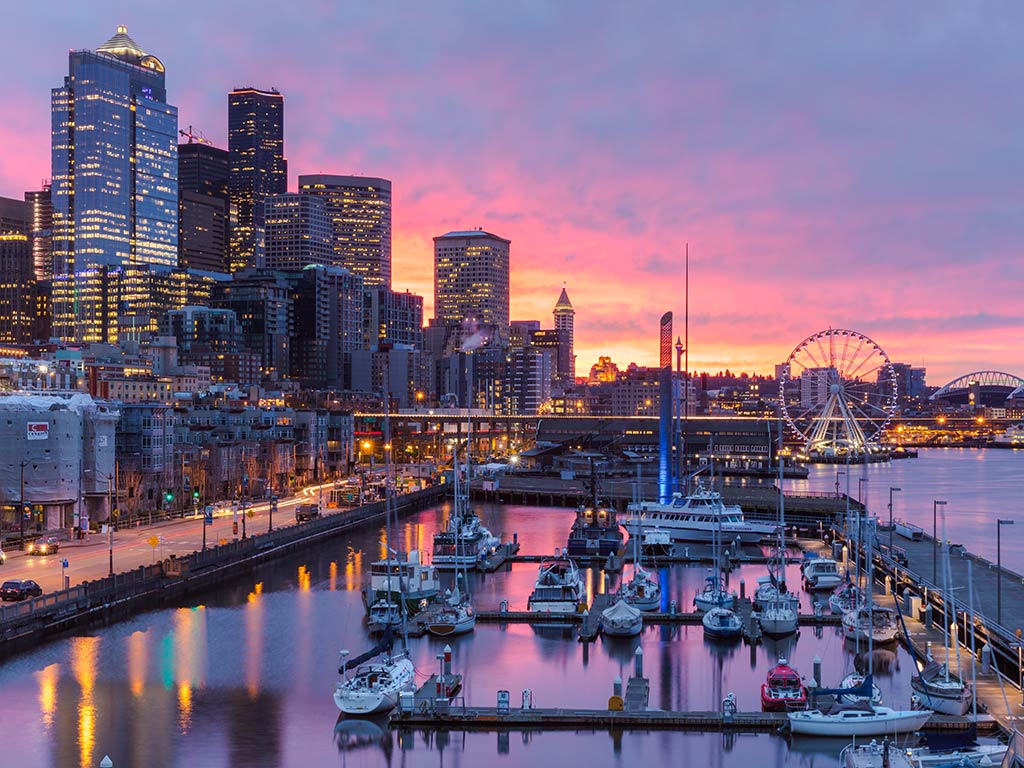
One of the best things about Seattle is how close it is to world-class Salmon fishing. Elliott Bay is embraced by the city itself, and when it’s open for fishing you can hook into huge migrating Chinook Salmon on their way back to the Duwamish River. These impressive fish are usually in town in July and August, but the Bay has very restricted openings to preserve the species.
Tacoma Narrows – Unforgettable Fishing in the South

The entrance to South Puget Sound sees thousands of Salmon pass under the Tacoma Narrows Bridge towards their native rivers to spawn. That makes the Salmon fishing here absolutely fantastic, particularly between Point Evans and the bridge. The area’s strong currents force huge schools of bait fish into a relatively small space – with Salmon following close behind. It’s not just about the Salmon, though. Anglers also target Lingcod here with great success.
The strong tides that make this area irresistible to Salmon also make it risky for boaters. We recommend fishing this area with an experienced local captain so you can focus on reeling in a keeper – not on tide times and busy shipping lanes.
Puget Sound Fishing Regulations
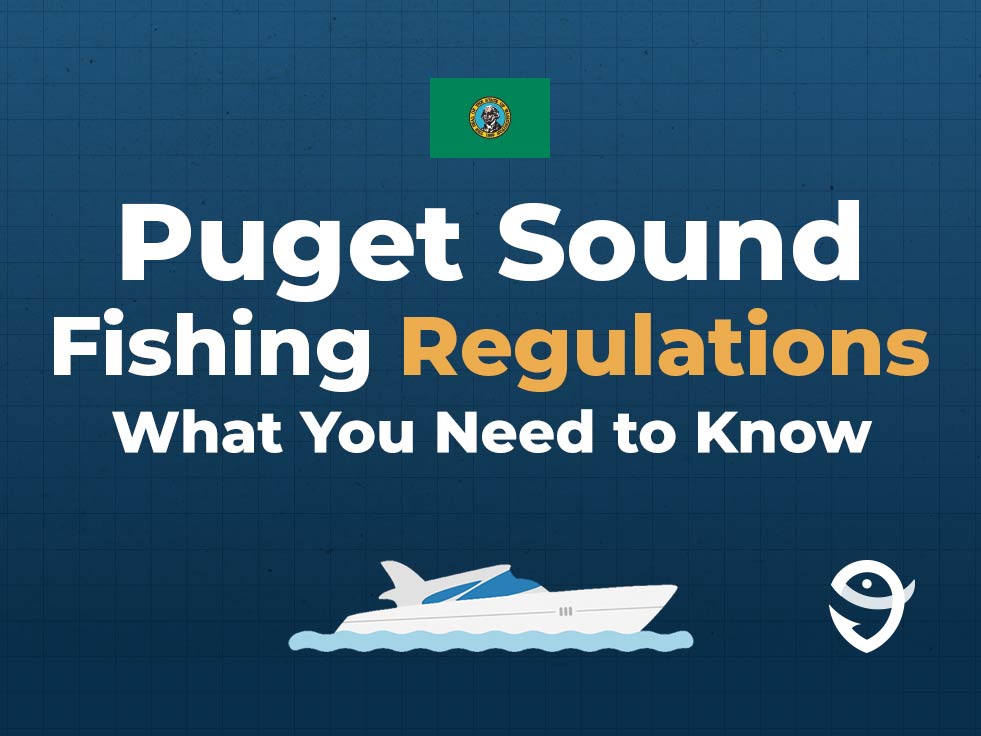
Everyone over the age of 14 who goes fishing in Puget Sound needs a Washington saltwater fishing license and a catch record card. Many charter operators can provide these for around $10, but it’s always a good idea to check with them before your trip. You can purchase licenses online or from numerous locations throughout the state.
Salmon and Trout have different rules depending on whether they came from a fish hatchery or not. Usually, you’re only allowed to keep hatchery fish, and you need to log them differently. You can tell if a fish came from a hatchery because its adipose (last dorsal) or ventral (pelvic) fin will be missing.
Puget Sound has relatively complex regulations about when and where you can catch and keep different fish species. We recommend fishing with a local captain to make sure you’re on the right side of the law or consult Washington State’s fishing regulations.
Fishing in Puget Sound: A World-Class Experience from Hook to Table
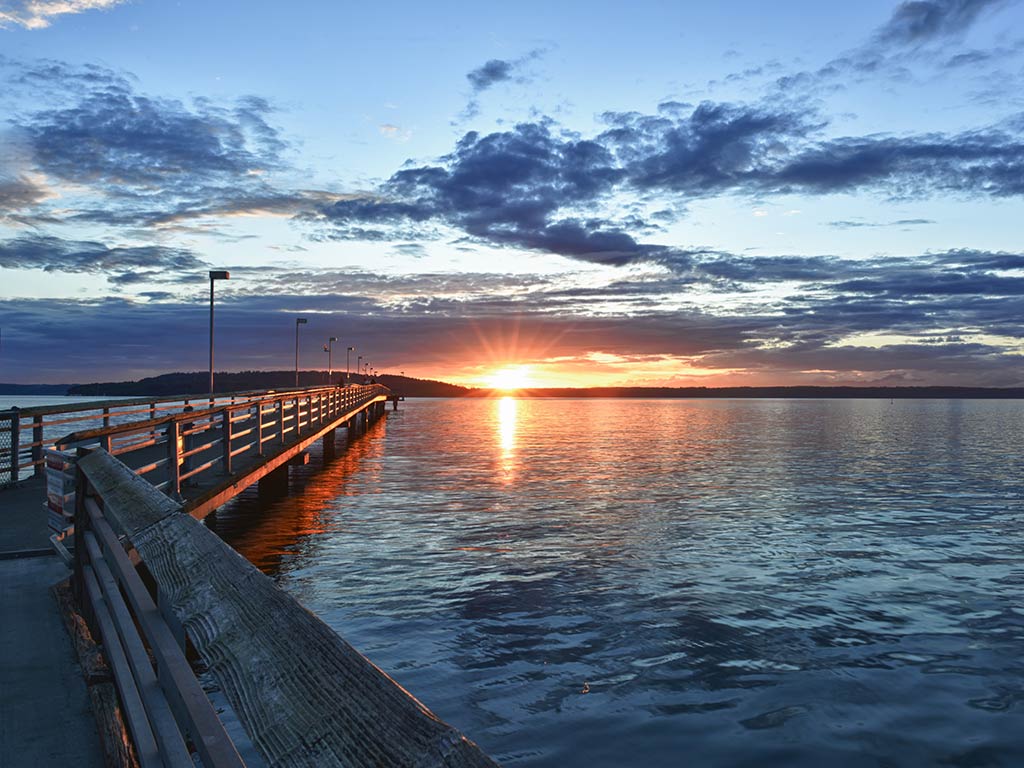
Whether you’re mooching around Elliott Bay or fly fishing a secluded island beach, the sheer number of sport fish passing by make for hours of top-class angling in Puget Sound. And the aftermath is often just as memorable as the fishing itself.
It’s a scientifically (un)proven fact that fresh Salmon, Lingcod, and calamari taste even better after a day on the water. So, no matter how lucky you are on the day, we bet your experience in Puget Sound will make you want to come back for more. Come and explore it for yourself!
There’s so much more to Puget Sound fishing than we could cover in this guide. What’s your favorite fishing spot? Do you swear by mooching or trolling? Let us know in the comments below!
The post Puget Sound Fishing: The Complete Guide appeared first on FishingBooker Blog.
https://ift.tt/fCSUmaT
0 Comments
Enregistrer un commentaire